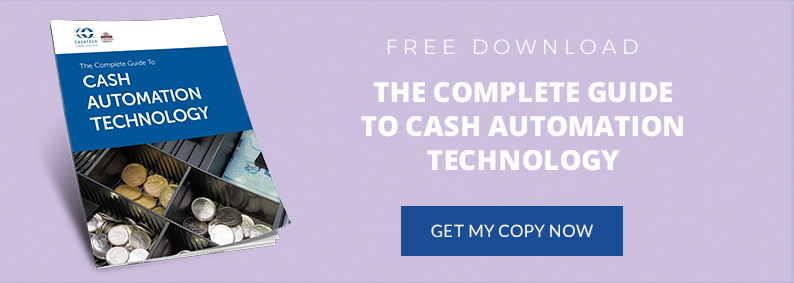Fraud Prevention Month marks its 10th anniversary in March. The Competition Bureau, along with 125 law enforcement agencies and other private and public organizations, holds a variety of events throughout the month to inform and protect the public against fraud. As part of a series on fraud protection, CashTech Currency will write about various ways that businesses and organizations can protect themselves. This week’s focus is on how businesses can protect their petty cash accounts.
As business becomes more complex and the economy continues to struggle, businesses are looking to automate as many of their cash handling procedures as they can. But one area that’s stubbornly resistant to cash automation is petty cash. Just by the nature of what petty cash is and how it’s used, it tends to be very manual, which paves the way for fraud and error.
What Is Petty Cash and How Is It Used?
A petty cash account is kind of like a family “change bucket.” It’s where you go for small amounts of money needed for occasional business expenses. Here are some situations where it makes sense to use a petty cash account:
The formal system isn’t cost effective. Many people don’t think about the costs involved in cutting a check, but they’re there. If it costs your business $2 to cut a check, it doesn’t make much sense to do that for a $5 purchase.
The formal system is too slow. If you’re out of stamps, you’re out of stamps. You don’t have time to wait for a check to crawl its way through the system.
A small expense is unique and unlikely to be repeated. There’s no point in setting up a new vendor so you can buy a colleague a baby gift.
How Are Petty Cash Accounts Vulnerable?
Every system has its vulnerabilities, and the main weakness in a petty cash system is that there often is no system. Because the amounts involved are usually small, businesses don’t always take record-keeping seriously. Too many employees have access to petty cash, and they may or may not write the amount down or put a receipt in the box.
Not only does that leave you unable to see where your money is going, it can also be a temptation to employees. Some people have a hard time resisting an unguarded piggy bank, especially if they’re struggling financially. They convince themselves that their employer won’t miss $10.
How Can You Protect Your Petty Cash?
The best way to protect your petty cash is to put clear-cut procedures in place and make sure everyone follows them. Here are some best practices:
Keep the money in a safe or lockbox. That may sound obvious, but a lot of petty cash accounts are easily accessible.
Give one person – and only one person – access to the petty cash account. That puts accountability squarely on their shoulders and emphasizes the importance of following procedures.
Make sure the person in charge of petty cash knows the policies and has the authority to enforce them. Policies are useless if a higher-ranking employee can just order the petty cash manager to ignore them.
Keep good records. You can find numerous examples of petty cash policies online. The simplest way is to use a voucher-receipt system. All petty cash distributions are accompanied by a voucher describing what the cash will be used for. After making the purchase, the person who requested the money returns the voucher (with the final amount filled in) along with a receipt and any change. Any discrepancies are noted on the voucher. At that point, reconciling the petty cash box is as simple as making sure the receipts plus any remaining cash equals the original amount.
Set a procedure for replenishing the petty cash when it runs low. (Note: Running low doesn’t mean there’s a problem; a higher than usual number of withdrawals can cause funds to run low.) Typically, the employee in charge of petty cash gets a manager to sign a check request.
If your business is one of the many moving toward automation in cash handling, don’t lose sight of your petty cash account. As one of the few remaining holdouts of manual accounting procedures, it’s ripe for fraud and error. And, with the small amounts involved, it tends to fly under the radar. But small amounts add up fast. Protect your business and your employees by establishing clear petty cash procedures and making sure everyone follows them.



